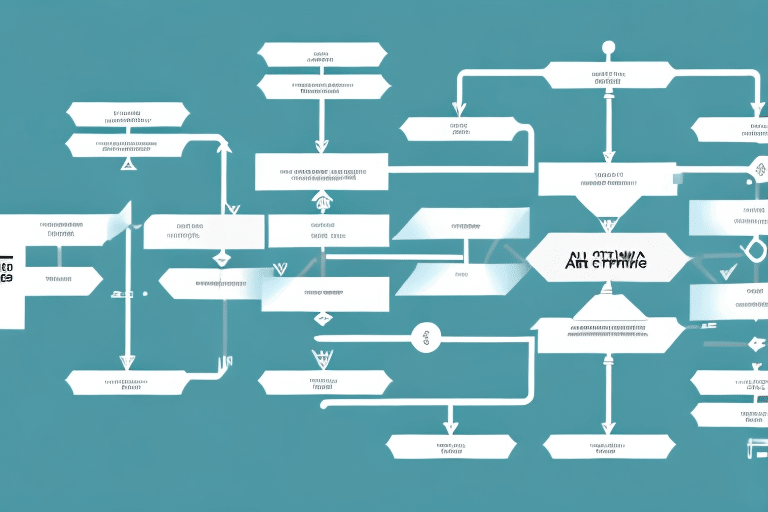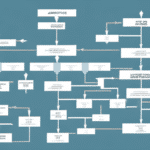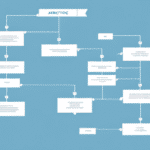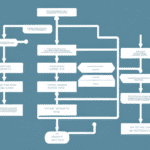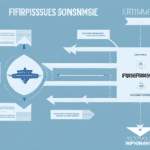Creating an Advanced Shipping Process Flowchart with Weights
In today’s global economy, efficient shipping processes are critical for businesses aiming to reach their customers effectively. Developing an advanced shipping process flowchart with weights serves as a valuable tool for optimizing shipping operations. This article explores shipping process flowcharts, emphasizes the importance of efficient shipping, delves into the nuances of weights and dimensions, and provides a comprehensive guide to creating and maintaining an optimized shipping flowchart.
Importance and Benefits of Efficient Shipping Processes
An efficient shipping process is paramount for ensuring customer satisfaction and business success. Delays or errors in shipping can result in customer complaints, negative reviews, and potential loss of business. Conversely, a streamlined shipping process enhances customer loyalty, increases revenue, and reduces operational costs.
- Customer Satisfaction: Timely and accurate deliveries build trust and encourage repeat business.
- Cost Reduction: Efficient processes minimize unnecessary expenses related to delays and errors.
- Environmental Impact: Optimized shipping routes and sustainable packaging reduce the carbon footprint.
According to a report by Logistics Bureau, businesses that prioritize efficient shipping processes see a 15% reduction in operational costs and a 20% increase in customer retention rates.
Key Components: Weights and Dimensions in Shipping
Understanding the weights and dimensions of packages is fundamental to developing an effective shipping process flowchart. These factors influence shipping costs, transportation modes, and delivery timelines.
Accurate Measurement
Properly measuring the length, width, and height of packages at their widest points, including any irregularities, ensures accurate cost calculations and prevents delays caused by incorrect weight reporting.
Impact on Shipping Costs
The weight of a package, including its contents and packaging materials, directly affects shipping costs. Accurate weight measurement helps in selecting the most cost-effective shipping options.
Research from the USDA Economic Research Service highlights that precise dimension and weight measurements can reduce shipping costs by up to 10% through optimized packaging and route planning.
Benefits of Shipping Process Flowcharts
Creating a shipping process flowchart offers multiple advantages, including improved communication, increased efficiency, and cost savings.
- Enhanced Visibility: Provides a clear overview of the entire shipping process, making it easier to identify and address inefficiencies.
- Streamlined Operations: Helps in standardizing procedures, reducing errors, and speeding up the shipping process.
- Regulatory Compliance: Ensures that all necessary steps are followed to comply with local and international shipping regulations.
Studies from the Supply Chain Digital indicate that businesses using process flowcharts experience a 25% improvement in operational efficiency.
Tools and Software for Shipping Flowcharts
Selecting the right tools and software is essential for creating an advanced shipping process flowchart with weights.
Flowcharting Software
- Lucidchart: Offers intuitive drag-and-drop features for creating detailed flowcharts.
- SmartDraw: Provides extensive templates and integration options with other business tools.
- Microsoft Visio: A robust tool for creating comprehensive and professional flowcharts.
Measurement Tools
Accurate measurement tools such as digital scales and tape measures are necessary for obtaining precise weights and dimensions of packages.
Barcode Scanners and Automated Systems
Implementing barcode scanners and automated sorting systems can significantly reduce errors and enhance the efficiency of the shipping process. These technologies integrate seamlessly with flowcharting software to streamline operations.
Developing and Optimizing Your Flowchart
Creating an advanced shipping process flowchart involves several critical steps to ensure accuracy and efficiency.
Step-by-Step Guide
- Define Process Scope: Clearly outline the boundaries of the shipping process, including all relevant departments and stakeholders.
- Identify Key Steps: List all the steps involved from order placement to final delivery.
- Collect Data: Gather accurate data on package weights, dimensions, and shipping times.
- Map the Flowchart: Use your chosen software to create a visual representation of the shipping process.
- Test and Refine: Validate the flowchart by testing it in real-world scenarios and making necessary adjustments.
Common Mistakes to Avoid
- Inaccurate Measurements: Ensure all weights and dimensions are precisely measured to avoid cost miscalculations.
- Lack of Stakeholder Involvement: Engage all relevant team members to ensure the flowchart reflects the actual shipping process.
- Ignoring Data Analytics: Utilize data to identify inefficiencies and areas for improvement.
Optimization Strategies
Continuously analyze and update your flowchart using real-time data and feedback to maintain optimal efficiency. Implementing automation where possible can lead to significant improvements in speed and accuracy.
Implementation and Maintenance
Successfully implementing an advanced shipping process flowchart requires careful planning and ongoing maintenance.
Training and Development
Provide comprehensive training for all team members to ensure they understand and adhere to the new shipping process. This fosters a culture of efficiency and accountability.
Regular Monitoring
Continuously monitor the performance of your shipping process using key performance indicators (KPIs) such as delivery times, error rates, and customer satisfaction scores.
Flowchart Updates
Regularly update your flowchart to reflect changes in your business operations, market conditions, or shipping regulations. This ensures that your shipping process remains relevant and effective.
Case Studies
Examining real-world examples can provide valuable insights into the successful implementation of shipping process flowcharts.
E-commerce Optimization
A leading e-commerce company revamped its shipping process by implementing a detailed flowchart that included package weighing and route optimization. This led to a 20% reduction in shipping costs and a 30% improvement in delivery times, significantly enhancing customer satisfaction.
Manufacturing Efficiency
A small manufacturing firm experienced frequent shipping errors, causing delays and customer dissatisfaction. By adopting an advanced flowchart that incorporated weight verification and address confirmation, they reduced errors by 50% and improved on-time deliveries by 25%.
Conclusion
Investing in an advanced shipping process flowchart with weights is a strategic decision that can yield substantial benefits for your business. By optimizing your shipping operations, you enhance customer satisfaction, increase revenue, and reduce costs. Additionally, a well-developed flowchart provides valuable insights into your operations, promoting better communication and increased efficiency. Follow the guidelines outlined in this article to create a customized shipping process flowchart that meets your business’s unique needs and drives success.















